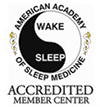888-503-2762
Hablamos Español
- Home
- •
- Telemedicine
- •
- DME Orders
- •
- Videos
- •
- SEC Non-Profit
- •
- Office Locations
- •


Restless Legs Syndrome is a common disturbance that usually goes untreated in most people. In fact most physicians did not learn about this condition in their medical training and usually do not recognize the symptoms in their patients. Identifying and treating Restless Legs Syndrome has improved drastically over the last ten years. This condition is characterized by uncomfortable, unsettled, restless sensations in the legs or feet usually while lying in bed at night before going to sleep. A person with these sensations obtains brief relief by movement of the extremities. As a result they will shift their legs frequently while trying to fall asleep. Once asleep, almost everyone with Restless Legs Syndrome will have brief movements of their legs, each lasting 1 to 5 seconds and occurring about every 20 to 40 seconds.
These movements, called Periodic Limb Movements of Sleep, do not necessarily occur all night long but rather during various periods throughout the night. The leg twitches may range from very mild muscle contractions to larger kicking movements. Nonetheless, the periodic pattern of these movements is the diagnostic feature that makes this phenomenon unique. The Restless Legs Syndrome may cause Insomnia. The affected individual may take hours to fall asleep, frequently tossing and turning to relieve the restless sensations. In some cases the person may even get out of bed to pace the floors in order to settle down the restless sensations. This condition may be caused by other medical problems such as Anemia, Kidney disease, Neuropathy or Spinal Cord disease. Although these conditions can cause the Restless Legs Syndrome, most patients do not have one of these conditions. In fact, the cause for Restless Legs in most patients is unknown. Studies recently published have demonstrated that in some people the Restless Legs Syndrome can be inherited. That is not to say that all cases are inherited, and not everyone who has it will pass it on to their children. Symptoms may also be worsened by stimulants, such as caffeine.
Clearly there are many causes for this condition, but most encouraging is the fact that this condition can finally be effectively treated. There are many treatments for this condition. In the past patients were given sedative medications so they would "sleep through" their symptoms. Now there are more specific treatments that eliminate the restless sensations and decrease or eliminate the leg movements during sleep as well.
If you have this condition, or you know someone with this condition, be sure the problem is discussed with a physician. If your doctor is not yet familiar with treating the Restless Legs Syndrome or unsure of the new treatment approaches available, then have them contact Comprehensive Sleep Medicine Associates, PA. (CSMA) for more information, and if needed an appointment can be arranged.
Further Reading:
Get the Inside Scoop on Restless Kicking During Sleep
Medical Matters News, September 28, 2010 article: Victoria Wright, Sadler Clinic.
![]()